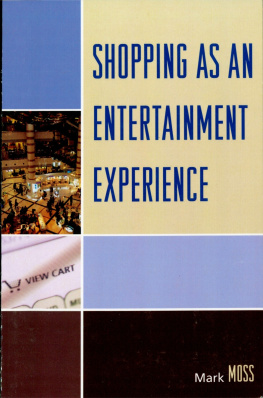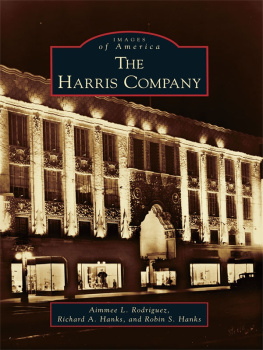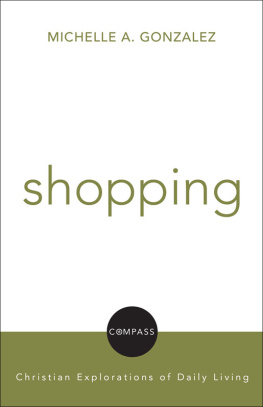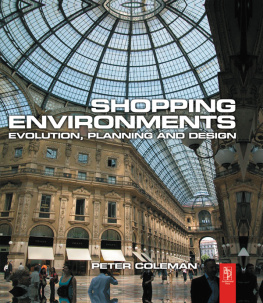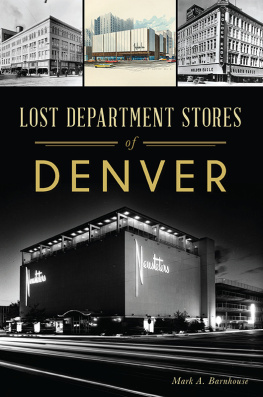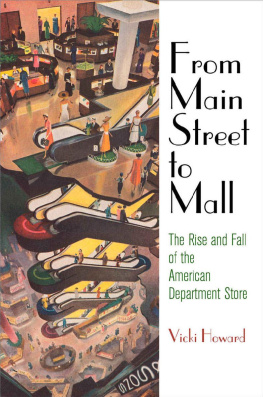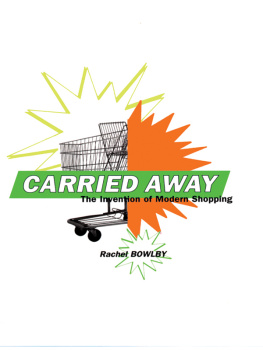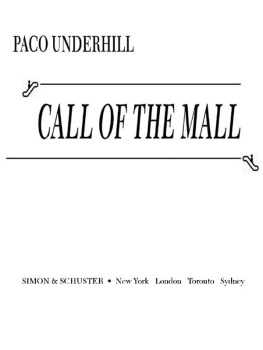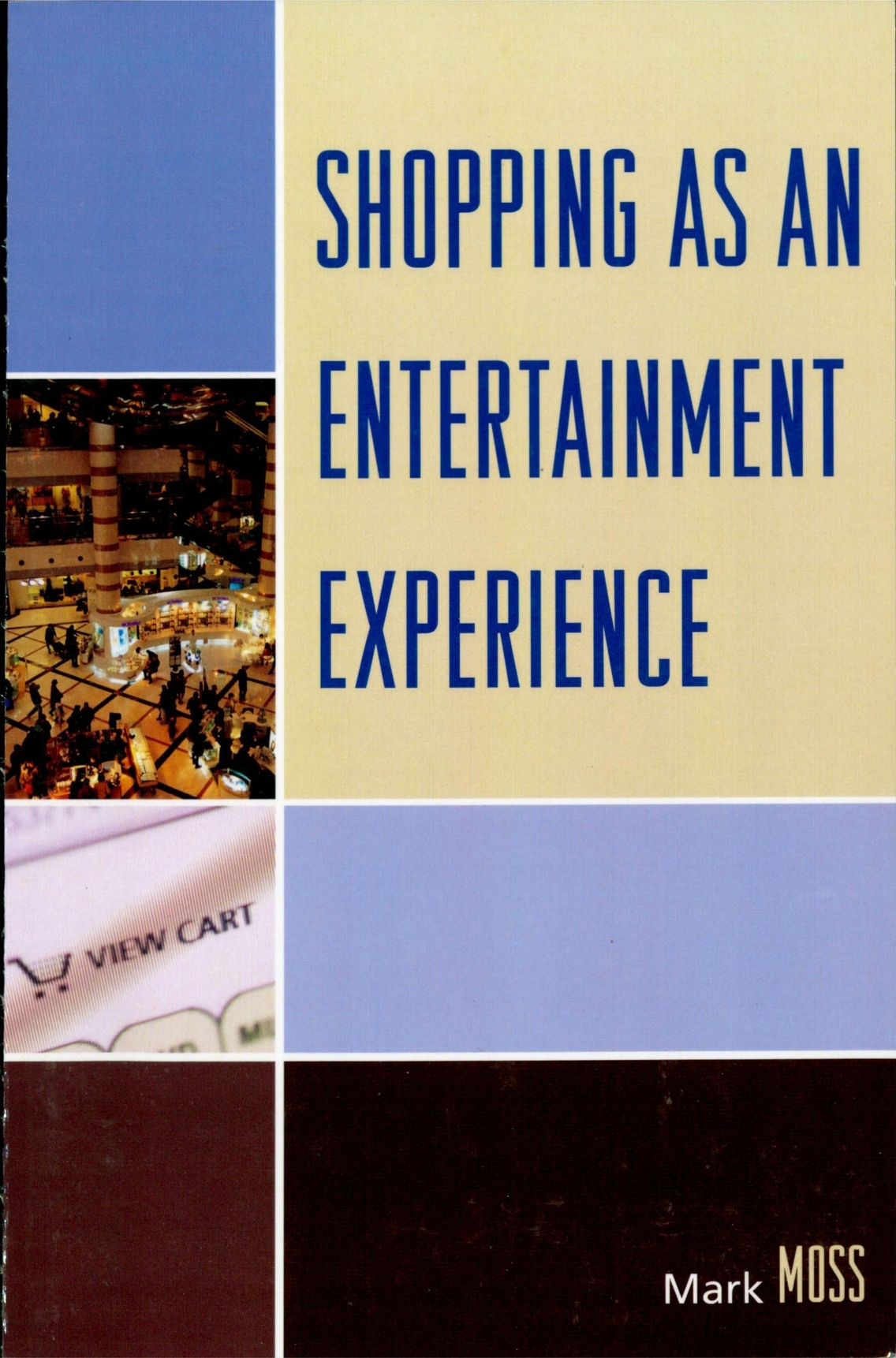Mark Moss is chair of the General Arts and Science Program at Seneca College in Toronto, Canada. He holds a masters degree in environmental studies from York University and a doctorate in history of education from Ontario Institute for Studies in Education of the University of Toronto. Dr. Moss is the author of Manliness and Militarism. He has published essays on culture, society, and the history of ideas and teaches courses in a wide variety of disciplines. His current research interests deal with visual history as well as an examination of contemporary masculinity. Prior to entering the academic realm, he worked for a diverse array of retail concerns and it is there that he began to critically examine the appeal of shopping.
Conclusion
S ince the 1980s, with regular bursts of the bubble, the acceptability of the enjoyment of shopping and the celebration of accumulation of goods, especially high-status purchases, has increased. The glorification of wealth, and not just in the West, has much to do with this trend. The Robb Report , a high-end showcase for the most exclusive and expensive items, from cars to watches to homes, dovetails with television shows that profile stores, shopping, and material culture. What this may be is a reversal or perhaps a perversion of Webers Protestant Ethic thesis. According to Colin Campbell, what the Protestant Ethic thesis suggested was not a prohibition on the acquisition of things and the accumulation of wealth, but the no-no was the enjoyment of possessions. Society has moved away from the guilt and the contriteness associated with shopping and purchasing. A form of vague hedonism pervades our universe and is expressed through shopping as an entertainment experience.
A significant amount of shopping still involves the most prosaic activities, what Daniel Miller calls provisioning. In his important and original study of fin-de-siecle public amusements and their correlation to public sociability, David Nasaw concludes his study by suggesting on the one hand that We no longer go out as much as we once did. We have all of our amusements in our homes, from computers to compact discs, which enhance our domestic environment. Yet Nasaw makes a key point, extraordinarily relevant for the themes of this work. He opines the following:
The public amusement centers that survive and prosper are those that have been reconceived, repackaged and transported out of town. The symbol of public sociability in the late twentieth century is not the picture palace or amusement park, but the enclosed shopping mall.
Going to the mall to browse for a few hours is more than just killing time. This idea highlights, again, the difference between the mundane doing the shopping and the more involved going shopping. As Jane Pavitt has written, going shopping might be an adventure, doing shopping a chore; we attach much more significance to the purchases we make when we are shopping for leisure; these are the goods that may give us identity or bring us to a sense of belonging.
What is important to recognize regarding shopping, and in particular, shopping at the mall, is the fact that people wish to enter into fantasy worlds that take them beyond their ordinary everyday encounters. Seeing a film that moves one into this realm is a very gratifying sensation. As an entertainment experience, shopping can allow the individual to move in an environment that is beyond the threshold of the ordinary.
Over ten years ago, one retail analyst suggested that entertainment is something that has been completely incorporated into every facet of our experience. In the North American context, and increasingly around the globe, some aspect of entertainment permeates our consciousness almost twenty-four hours a day. Presciently, he remarked, People have come to expect to be entertained. In the minds of American consumers, the pursuit of happiness had developed into the right of entertainment.
As society searches for more entertainment experiences, the impact on shopping will increase. Novelty and newness, diversion and amusement will become fully intertwined with shopping in order to create the most effective environments and to instill a level of comfort and attraction that is quite pronounced. If one looks at the evolution from the department store to the mall to the e-store, this process is well on its way.
It is increasingly being thought that the new way to appeal to shoppers is to lure them in with all the entertainment trappings that are conceivable. This move, to transform all of shopping into an entertainment event, an escape from everyday life, seems quite promising to those involved with the activities surrounding shopping. If people are willing to pay to go to Dave & Busters or to throw money around at the Rainforest Caf or the Harley Davidson Cafs merchandise, the enhancement of the entertainment component of many retail environments will only continue. The creation of environments, such as in Las Vegas, that are fully designed as a shoppers escape where the pleasures and fantasies of unabashed consumption have been created is possibly just the first step.
As developers and designers think of new ways to make shopping an entertainment experience the boundaries between old, established parameters will disappear. City spaces will blend into atmospheres which promote shopping in subtle and sophisticated ways. Urban renewal will become enmeshed with creating more novel shopping experiences, further blurring the lines between consumption, entertainment, and leisure. To some extent, post-modern metropolises such as Shanghai have already become the full-fledged extension of this process. The city, in these instances is a shopping Mecca of unparalleled entertainment experience. One can bargain in the famous markets and be entertained or one can peruse a wide array of shopping experiences that are predicated on the city itself as the ultimate shopping mall. These zones become famous for their bargains, their sophistication or their extravagance. And they have come to rival cultural, artistic, and heritage sites in their appeal. Just as important in seeing the colonial buildings on the Bund in Shanghai, one must walk down the pedestrian mall on Nanjing road. It has become commonplace to say that if you did not see Nanjing, you did not see Shanghai. But even a visit to some ruin or site in the countryside now includes shopping. Whether a trinket from a souvenir stand, or a work of art from a sculptor, no longer can travel be oriented around just seeing. One must and does , shop.

